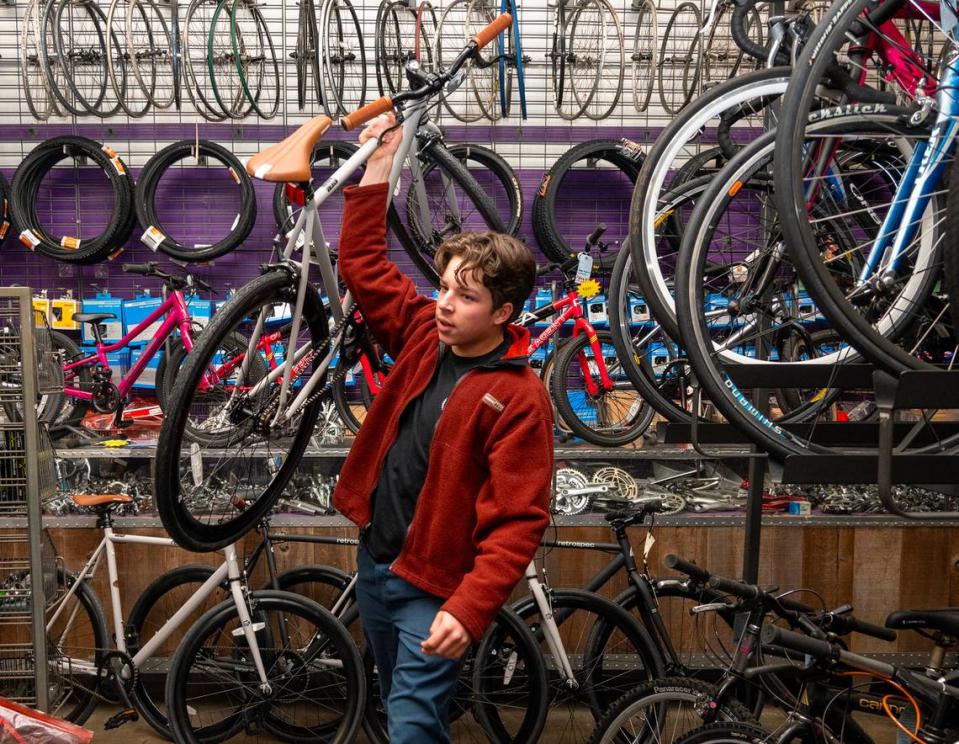Sacramento wants to make roads safer for pedestrians. Here’s how to weigh in on streets near you
Sacramento needs to hear your gripes about streets near you.
The city is creating a new plan to make walking, rolling and biking on city streets safer and more pleasant. The extensive plan includes areas where officials want to fix sidewalks, slow down cars and plant more trees.
The plan emphasizes neighborhoods in south Sacramento, North Sacramento and “Fruitridge/Broadway,” which includes Oak Park, Tahoe Park, southeastern Sacramento and city neighborhoods south of Fruitridge Road and east of Stockton Boulevard.
Is there an intersection that terrifies you? A street you’re afraid to walk across? Is there a bike lane that mysteriously ends in the middle of a block, or a wide road where traffic just seems to get faster and faster, destroying your dreams of ever getting back into cycling shape?
Sacramento has an interactive map on which residents can provide feedback and suggestions about the current “Streets for People: Sacramento Active Transportation Plan.” It’s accessible at sacstreetsforpeople.org.
For example, one resident identified as “M” left a comment about 21st Avenue near 55th Street: “Crosswalks here don’t have ramps, unsafe for strollers and wheelchairs.”
Additionally, the city will host in-person events in the coming months. Virtual workshops and focus groups are planned for July; people who wish to attend can register by scrolling down the main page at sacstreetsforpeople.org to the “Community Events & Presentations” list.
The city is also working on a plan for more shade trees, especially in those neighborhoods with a thin or nonexistent urban canopy. Trees make walking and biking more pleasant — and more feasible in hot summer months.
High stakes, questionable funding for public safety plan
Although the city’s plan is not purely about safety, the stakes for many residents are life-or-death. The capital region was just identified in a nonprofit report as the 20th most deadly metropolitan area for pedestrians in the country.
City officials in Sacramento have said that making safety improvements to roads is a high priority, though they have done little to direct funding toward that aim. California’s capital city did not fund the Active Transportation Commission’s recommendations in the 2024-2025 budget.
This year, The Sacramento Bee has covered the deaths of 11 pedestrians and cyclists, nine of whom died on roads the city has already identified as dangerous.
Mattie Nicholson, 56, Kate Johnston, 55, Jeffrey Blain, 59, Aaron Ward, 40, Sam Dent, 41, Terry Lane, 55, David Rink, 51, James C. Lind, 54, Jose Valladolid Ramirez, 36, Larry Winters, 76, and Sau Voong, 84, were all walking or biking on city streets when they were fatally struck by cars this year.
All but Ramirez and Voong were on roads that Sacramento considers part of the “high-injury network” — those city streets where the most deaths and serious injuries occur.
Johnston, a mother and an attorney, was one of the first to die in January at 21st and X streets. She was hit by a car while riding to work at the California Department of Social Services, using the unprotected bike lane on 21st. Her wife, Teresa Zepeda, said that Johnston was a stickler for bike safety, with her bright neon clothes, her flashing lights and her helmet. Johnston, she said, carefully planned all her routes to minimize her exposure to danger.
“It didn’t matter,” Zepeda said. “Now I see people on their bikes and think, as careful as you are, it is not enough.”
Though Sacramento has struggled to make its roads safer, other U.S. municipalities such as Hoboken have shown that changes to infrastructure can prevent vehicle-related fatalities.
The New Jersey city has not seen a traffic death in seven years. Mayor Ravi Bhalla, who led the charge to improve the roads, said that perhaps a single death in a smaller city like Hoboken resonated more with the public and officials. When Agnes Acerra, 89, was fatally struck crossing a Hoboken street in 2015, Bhalla said he found the loss unacceptable.
Perhaps, he suggested, when people die crossing a street in a larger city like Sacramento, “because of 200 other things going on, it goes in one ear and out the other.”


